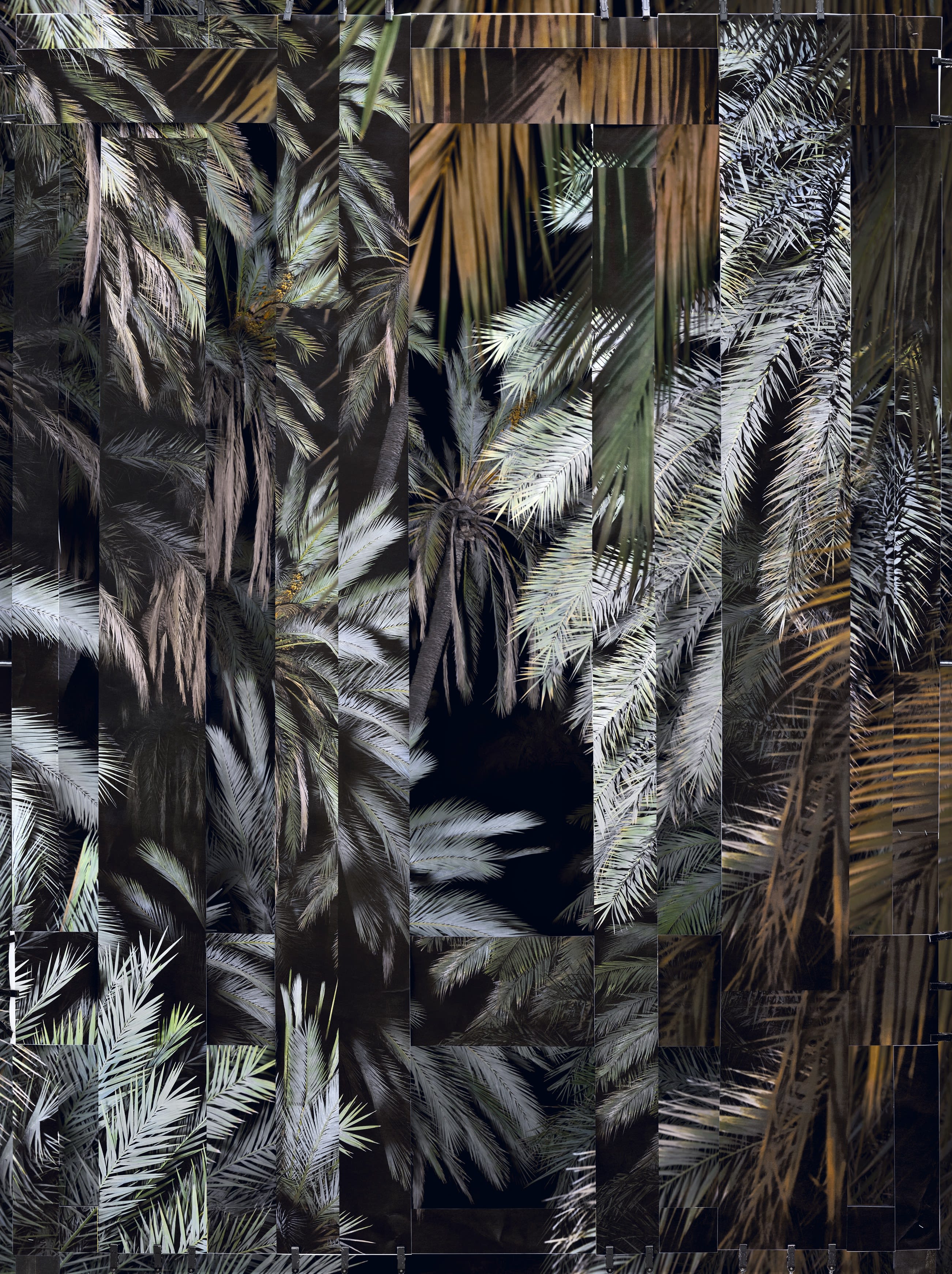What’s the origin of the exhibition’s title, Post Atlantica?
Atlantica was an ancient continent before it split about two billion years ago, leaving fragments of land that are now located on either side of the South Atlantic Ocean. I wanted to have the notion of geography and time in the title. I’ve been doing a lot of research into paleoclimatology – the scientific study of past climates in order to understand what might happen in the future. Scientists look at drops of water captured in rocks, pollen captured in ice or at the bottom of lakes, palm tree fossils, things like that, in relation to other types of discoveries, for example the level of carbon at the time. This tells them what the climate and landscape was like 50 million years ago or 300 million years ago. The earth has been through some drastic changes – at one point it was covered by ice, at another it was so full of methane and carbon dioxide that it was completely dark for hundreds of years. These past climates have left traces.
As an artist by training, what was it like immersing yourself in the language of science?
Very difficult. My brain is not calibrated to understand that way of thinking. I started by reading more accessible articles and then I got deeper into the subject and asked questions to scientists themselves. But from the beginning, my work has always been about this question of time. I first became interested in the history of science, how in Antiquity or in the Middle Ages, they understood the landscape differently because the knowledge, the social and religious context were so different from now. For example, Dante Alighieri saw the world as divided into strata or layers with Hell in the Earth’s core going up to Heaven. Another 13th century thinker, Ristoro d’Arezzo, thought that mountains are attracted to stars which pull them upwards, similar to the way that tides are formed through the gravitational forces of the Moon.
Your project is about the climate, albeit very much looking at the big picture. How do you relate to the climate emergency as a topic? It’s such an existential threat, it almost feels like it frames the narrative in all artistic work, whether directly referenced or not.
I think I’m interested in landscape in the same way as land artists were in the 1970s. It’s a way to say something universal about human behaviour. My work isn’t about climate change or the Anthropocene, it’s an exercise in trying to understand the world in its different states. We don’t often capture how old the earth is. But although I’m not trying to talk about climate change directly, I’m aware that – because we are so concerned about it – if you look at a landscape it’s the first thing that comes to mind. It’s almost like now there are no other readings.
It’s interesting that at climate protests you often see placards saying, “Save the Planet” or “There Is No Planet B” but won’t the planet just continue to exist without us?
Completely. There is a problem in communication. There is no planet B – for us. And also for all the species that we are destroying. The whole ecosystem we have now might completely disappear. But then other species will come back after we’ve left. If you look at the history of how the first plants and animals evolved, it’s amazing. Everything we have has come from very little. Even if the planet is uninhabitable for humans, there will be some kind of revival.
Your way of working entails intervening in the landscape – sometimes putting mirrors or large-scale prints in situ to produce optical illusions. How did you create these works?
For the set of images titled Les Mecaniques – Phoenix Atlantica (2021), it was almost like a performance. I shot the images in a palm tree grove at night. We had a truck with a big printer inside so once I took the images I printed them and cut them into strips. I had a 2x3m frame that was exactly the same ratio as the picture, which I placed in front of the camera and then clipped the printed strips of photograph to the frame before rephotographing the landscape. So closer to the camera, there’s this layer of paper and then at the back you’ve got the real landscape. To shoot my film, Below the Deep South, I used lots of different paper backdrops in front of each other. The first one was really large, right in front of the lens, and then they got smaller up until the last one, 15 metres away from the camera. I set them alight so they burn one after the other so it looks like it’s a never ending landscape engulfed in flames.
The constructed nature of your imagery – made apparent by showing clips or rope in the frame – comments on the limits of photographic vision. But does it also say something about the limits of our ability to see our true place within the history of the earth?
Yes. It’s somehow too big for us to grasp, which is quite understandable because we are comparatively small. I think it’s about putting yourself in a more humble position. And I’m talking now as a person, not just as an artist. We have to change our behaviour: to completely redefine our way of being on the planet, of interacting with each other and with other living things. We thought we were strong; the pandemic has shown our fragility. But it’s also beautiful to reconsider our own animality and our place within the ecosystem. And not feel so disconnected.


